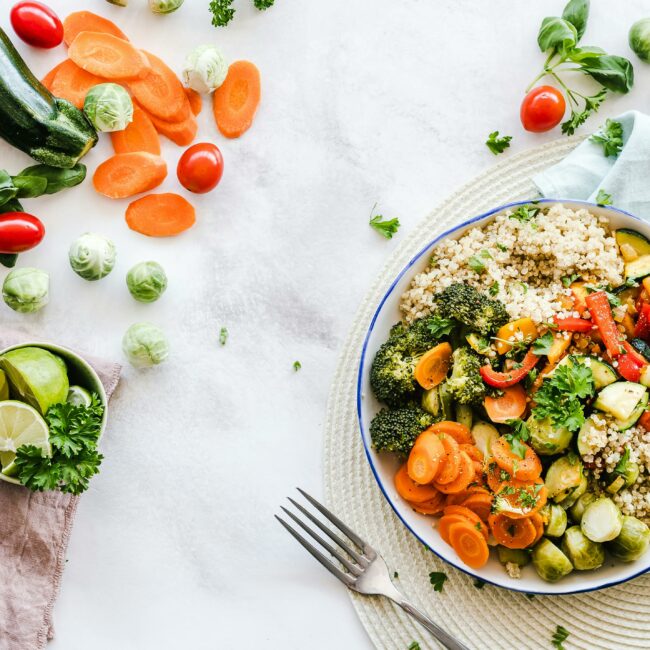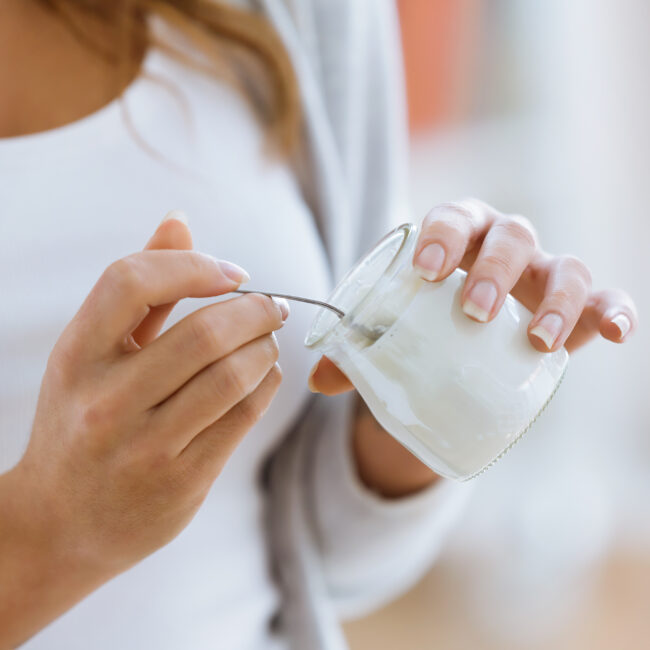As a centre at the heart of innovation, AGIR (Agro-Food Innovation Research) works with the R&D teams of various food companies to find solutions to meet current market trends. On 27 and 28 November, a 2-day training course on substitution strategies and clean label trends will take place. We met Mathieu (Head of the Research Unit) and Martine (Director) to get their expert opinions on the clean label in food products.
According to Euromonitor, the market for clean label products has reached $165 billion in 2015 and is expected to reach $180 billion in 2020. Do you feel this evolution in the training demand of the companies you work with?
Mathieu and Martine : We had the feeling that a real emulation was appearing around the notion of a clean label. Through our experience as an innovation centre we were able to work on different food formulations, but also we had the capacity and hindsight to carry out a bibliographic synthesis to better understand the functionalities of additives and consider alternative technical solutions… The capitalisation on this work led to a training, which arouses the interest of a very wide audience: very small businesses, SMEs and larger companies. Companies are choosing to adopt the clean label strategy, despite the costs that this can generate, they want to respond to growing consumer demand.
Mathieu : For the past 2 years, the Scientific and Technical Committee that guides our research work has defined the clean label as the main focus of its work. In this context, we also started a thesis at the beginning of the year on the same subject.
The definition of the clean label remains vague in the eyes of consumers, are they GMO-free, pesticide-free or simply organic products? How would you define it?
Martine : The notion of clean label is not regulated (regulatory void) and has become a concept. It is no longer just a matter of having a clear, clean and transparent statement (closet ingredients), it is also about authenticity, naturalness, balance and nutrition. Behind these terms we hear: simple and known ingredients, no preservatives, simple processes, labels, short circuits, absence of GMOs, minimalist ingredient list… There is therefore this notion of without additives but this is not always the case, because we can have a product that we present as « natural » despite the presence of an additive. We then explain its role and specify its origin, which reassures the consumer.
Mathieu : The marketing stakes are high. It is about selling a product as more natural, reassuring with more transparency and explanations. Some brands are based on this, such as Bonne Maman, which offers highly purified products. But using noble ingredients and cupboards has a certain cost.
It’s a tightrope walker game! Reformulation to achieve the clean label remains a challenge in itself depending on the products.
At the beginning of the training we try to define the concepts around the clean label. I based myself on a vast sociological survey based on more than sixty countries. This survey shows that the definition of the clean label depends a lot on the social situation. But the authors did try a definition: no more than 5 ingredients are needed and they must be known. It is preferable to avoid chemical names because they frighten the consumer. For example, xanthan gum, although part of the additive category, is well tolerated by consumers.
Clean label reformulation is often: replace an additive with an ingredient. But this replacement by an ingredient with a similar functionality can lead to bias because there is no standardization of the ingredient. The additive will always have the same degree of purity, this is part of its standardization, its definition, it has repeatability, whereas a natural ingredient is less standardized.
Conclusion
From our discussion, we were able to conclude that what we must always keep in mind when reformulating a product’s clean label is that there are three major aspects to consider. The reformulation must not alter the sensory properties of the product (acceptability to the consumer). It must also ensure that health properties (microbiological quality in particular) are maintained, and finally, technological barriers must always be considered at the scale of industrialization. So, as Mathieu rightly says in this interview, it is indeed a tightrope walker’s game to find.
In order to go further in the clean label reformulation, we will come back through different interviews on some major points such as the integration of simpler ingredients instead of additives, the improvement of nutritional profiles by playing on sugar content and fat content, but also the implementation of simpler processing processes to send a message through the product that is clearer to the consumer.
An interview of:
AGIR, located in Talence near Bordeaux at the service of industrialists: For innovation to go hand in hand with solutions…











